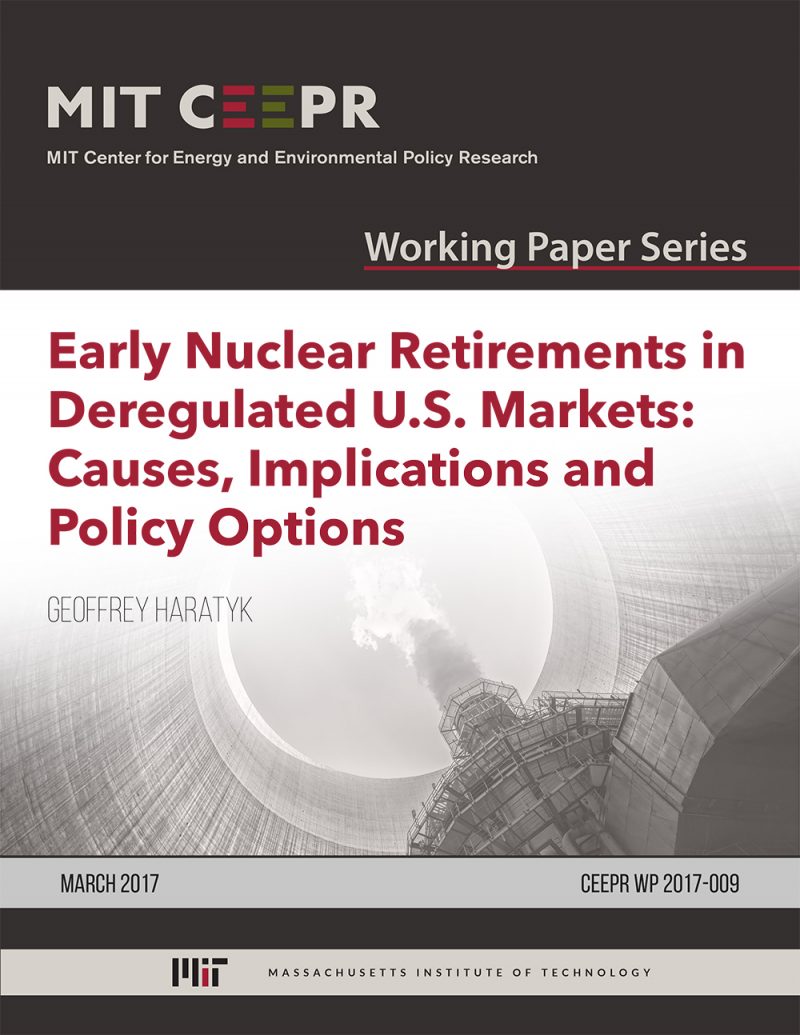Early Nuclear Retirements in Deregulated U.S. Markets: Causes, Consequences and Policy Options
Geoffrey Haratyk
March 2017 (Revised June 20, 2017)
Electricity prices have fallen significantly since 2008, putting commercial nuclear reactors in the United States under substantial financial pressure. In this market environment driven by persistently low natural gas prices and stagnant electricity demand, we estimate that about two thirds of the 102 GW nuclear capacity are uncompetitive over the next few years under the current trajectory. Among those, 18 GW are retiring or are merchant plants at high risk of retiring prematurely.
The potential consequences of the hypothetical withdrawal of 20 GW of nuclear capacity include: 1) a ~3.2% increase in carbon emissions of the power sector if replaced by gas-fired units or 2) a significant increase in cost if replaced by renewables.
Without a carbon price, out-of-the-market payments would be needed to effectively maintain merchant nuclear capacity. Filling the revenue gap would come at a fleet-average cost of $3.5-5.5/ MWh for these plants, which is much lower than the cost of subsidizing wind power. The policy support could take the form of direct zero-emission credits, renewable portfolio standard expansion, or clean capacity market mechanisms. As a last resort, the exercise of a new mothballing status could prevent the irreversible retirement of nuclear power assets.



